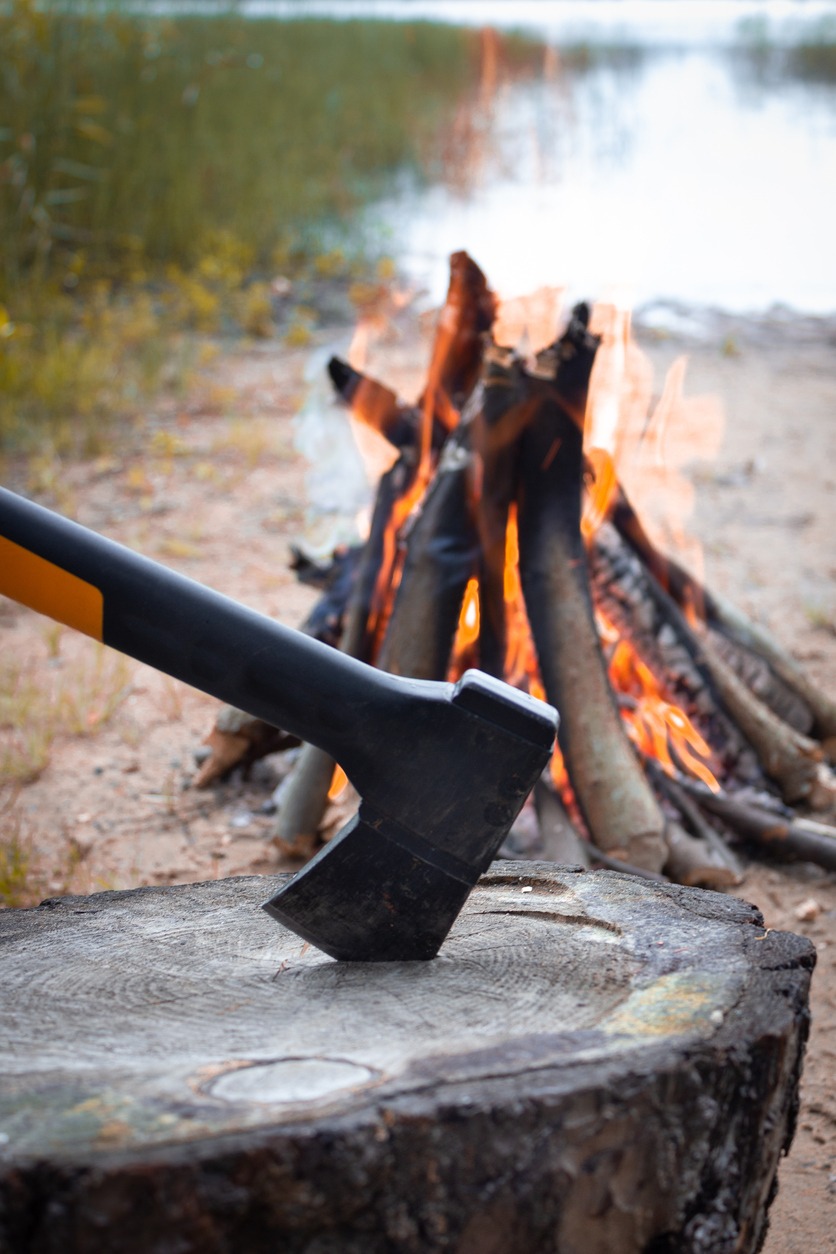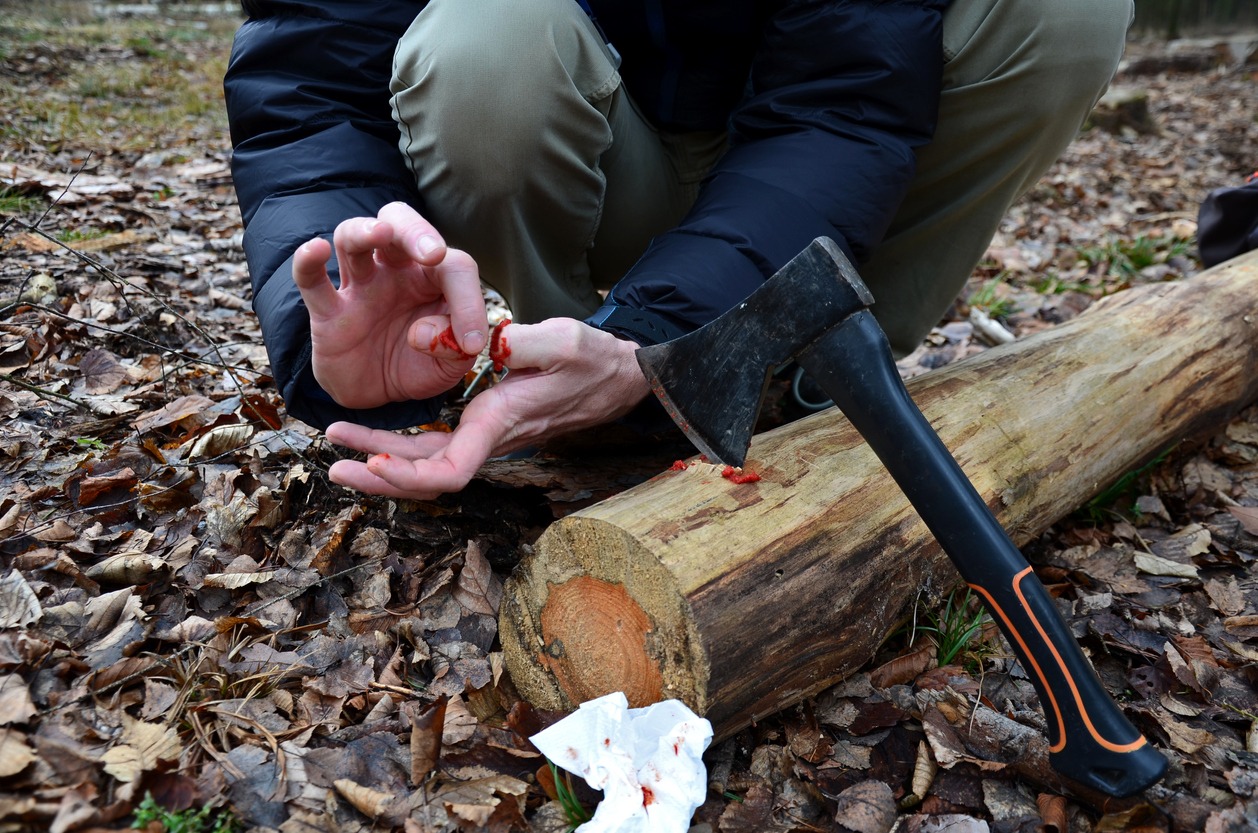A powerful survival axe can split wood and, in an emergency, double as a self-defense tool. Because of this, survival axes are fantastic. They are a brilliant illustration of how a single rudimentary tool may perform numerous survival purposes. There aren’t many tools that are as deeply ingrained in human life as the ax. Its usefulness is demonstrated by the fact that it has endured throughout time, up until the present. We’ll take a look at the top survival axes you can find because having the correct tool for the job is crucial.
Types of Axes
- Felling Axe: These axes’ broad, sturdy blades are made to eat enormous chunks out of trees and bring them down. The felling ax’s purpose is to chop down trees.
- Hewing Axe: The Hewing ax is used for chopping logs into lumber and has a flat ax head. Yes, folks used to use an ax to do that. Although it’s difficult to imagine, they succeeded! The flat head of this axe was useful for that.
- Forest Axe: You need to have a forest ax with you when you go into the woods and need to prepare a lot of fuel for a fire. These axes are easier to carry in the woods because they are smaller than a typical ax. This small ax is more powerful than a hatchet and larger.
- Throwing Axe: These little, razor-sharp axes are made to be thrown at targets. They would have previously been intended for throwing at people to injure or kill them. Now we merely hurl them at wooden targets while inebriated.
- The Fireman’s Axe: This particular ax is made for opening doors and windows. It has a large, powerful ax head with a spike on one side for destroying doors. The use of this particular ax has advantages. Gaining access can be crucial, especially for surviving in cities.
- Hewing Axe: The Hewing ax is used for chopping logs into lumber and has a flat ax head. Yes, folks used to use an ax to do that. Although it’s difficult to imagine, they succeeded! The flat head of this axe was useful for that.
- Chopping Axe: For cutting off branches and other bits of trees or vegetation, the chopping ax’s head is thinner and sharper. These are excellent tools for landscape maintenance and for slicing the branches off downed trees before destroying them.
- Maul: The most common error made by ax owners is using any form of the ax as a maul. The maul resembles a wedge-tipped sledgehammer in essence. The difficult task of splitting big rounds of wood is why it was created. If you’re going to bring down big trees and break them down, it’s crucial.
The Parts of an Axe
- Head: The hard part of the axe that does the chopping is the head. Depending on the task at hand, it can be forged into a variety of sizes and forms, making up most of the tool’s weight. Stone, bronze, or copper was historically used to create the head. Steel, iron, and composite materials saw an increase in usage over time.
- The Bit: The cutting edge, commonly referred to as the blade, is the axe’s bit. It is a crucial component of the axe and will have a big effect on how well it cuts. As the point of contact, the bit must endure a significant impact. The tool’s entire force is transmitted via it. An aggressively thin blade profile blade profile that is aggressively thin will cut through wood more quickly but is more likely to shatter. When utilizing a felling axe, carpenter’s axe, or hatchet, care is crucial. Chopping operations will be considerably simpler and safer if the blade is sharpened and undesirable material is removed. Maintaining a razor-sharp bit isn’t as crucial for splitting axes because they rely on force to cut through wood.
- Handle: To grasp the tool, one uses the axe’s handle. It varies in a variety of sizes, weights, and shapes and is often lighter than the head. Even though the fact that modern producers use a variety of composite materials, handles are still often made of wood, such as hickory. These updated handles include advantages including lighter weight and stress absorption. Greater leverage and power are advantages of longer handles. They have a limited range of use and might be difficult to swing.
- The Butt: The area of the head opposite the blade is known as the butt. It is also referred to as a poll or hammer and often has a wide flat surface that is helpful for light hammering tasks. Only found on single-bit axes, the butt serves as a great counterweight to the blade. A well-designed poll will make swinging an axe feel much more natural. A poll not only adds weight to the skull but also to equilibrium. With each swing, the added weight increases the force of gravity and the swing. A large, hefty poll on a heavy-duty splitting axe helps crush through large, twisted logs. A lot of butts haven’t been heated to survive heavy impacts, so take care of it. Use it instead for less impactful tasks like driving in wood stakes. Never hit steel wedges or other harsh items with your hands.
- The Eye: The axe head’s eye is the opening through which the handle can be attached. To give the best equilibrium, it is located in the middle of the head. Frictional holds the handle and head firmly in place. Although the eye is a crucial component of the axe, it also creates a weak area. Handles falling loose here is a frequent reason axes need to be fixed. Axes do not all have eyes. Some producers create objects made entirely of steel in a single piece.
Tips for Choosing the Best Axe for Survival
When purchasing an axe, you should consider the following important factors:
- The Balance: The swing of an uneven axe will be improper, and it is more likely to break. It’s crucial to be able to hold an axe in your hands when you’re looking for one. Swing it, balance it, determining how much weight is on it, and so forth. If you test out a few, you will be able to tell the difference between a balanced and an imbalanced axe.
- Durability: Your axe must be sturdy, as I’ve said a few times already. These items are designed to be swung at hard objects with a lot of force. Your axe won’t function if it is unable to handle the pressure of its labor. Understanding an axe’s durability depends on a variety of criteria. One factor is the kind of metal used to forge it (high or low-carbon steel), another is the substance used to make the axe handle, and a third is how you take care of it.
- Weight: Axes are typically too heavy to transport over long distances. The fact that some axes are significantly heavier than others makes a difference. You don’t want anything so light that it won’t have any momentum when you swing it. However, you do not want an axe that is heavy and clumsy. It’s crucial to strike a balance between the two. Another one of those things that you have to experiment with firsthand. Decide which swing you prefer after experiencing it for yourself.
Uses of a Survival Axe
- Self-defense: A fighting axe and a utility axe differ greatly from one another. However, that does not imply that a utility axe cannot still be utilized for combat. Even more ancient than the sword, axes can inflict harm on an opponent if you need to swing one at them.
- Cutting Firewood: Yet another traditional task for a survival axe. Not only is cutting wood a utilitarian activity, but it is also therapeutic and has been shown to raise men’s testosterone levels.
- Cook: A properly sharpened axe can be used to clean and skin animals to prepare them for cooking. Use your axe to assist you to decapitate, gut, and skin your prey.
Any tool that is as functional and versatile as an axe ought to be a part of your survival kit. It is a single tool that serves multiple purposes.


